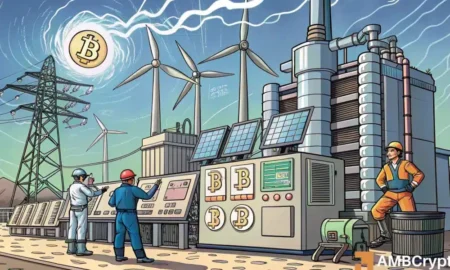The Significance of the Fusaka Upgrade for Ethereum: An In-Depth Look
As the ever-evolving landscape of blockchain technology continues to flourish, Ethereum (ETH) stands out with its innovative upgrades aimed at enhancing security, efficiency, and scalability. Among its notable enhancements, the upcoming Fusaka upgrade is poised to make substantial strides towards these goals. Set for launch in December 2023, the Fusaka upgrade introduces key features like Peer Data Availability Sampling (PeerDAS) and a significant increase in block gas limit that could reshape Ethereum’s framework.
Understanding the Fusaka Upgrade
Fusaka represents a pivotal addition to Ethereum’s development narrative. This major upgrade follows a series of significant improvements since 2020, including the Merge and the Shapella updates. The Ethereum developers have confirmed the mainnet launch for Fusaka during a recent All Core Developers Consensus (ACDC) call. After a successful testing phase on the Holesky and Sepolia testnets, the upgrade is anticipated to usher in a new era of performance and capacity enhancements. By introducing a dozen Ethereum Improvement Proposals (EIPs), Fusaka is not only the most meaningful update since the May 2025 Pectra update but also sets the stage for the next generation of Layer-2 integration solutions.
Key Features of Fusaka
The Fusaka upgrade distinguishes itself through a variety of impactful features. Chief among these is Peer Data Availability Sampling (PeerDAS), a vital component that enables validators to access and verify data more effectively, enhancing overall network security. Initially intended for the delayed Pectra update, PeerDAS has undergone extensive testing to ensure stability and reliability. Another critical change is the increased block gas limit, rising from 30 million to 150 million units. This substantial upgrade directly addresses Ethereum’s transaction capacity, aiming to double the throughput of blob data and facilitating a more scalable, low-cost transaction environment. These improvements are reflections of Ethereum’s long-term vision to meet the demands of a growing user base.
Market Reaction to the Fusaka Announcement
Interestingly, despite the anticipation surrounding the Fusaka upgrade, Ethereum’s market performance has exhibited bearish tendencies. Currently, ETH is trading below crucial exponential moving averages (EMAs), reflecting a challenging market environment. The cryptocurrency recently faced selling pressure, hitting a low of $3.6k before rebounding to a high of $3.873. As of now, Ethereum’s price is approximately $3842, indicating a daily decline of 1.72%. This bearish trend is mainly attributed to increasing selling activity, as indicated by positive Ethereum Exchange Netflow data from CryptoQuant. Notably, when selling pressure intensifies, it often signals a potential decline in prices, causing concern among investors.
Current Market Trends and Future Projections
The present market conditions suggest that ETH’s upward momentum may be waning. After breaching the $3.8k support level, technical analyses indicate a potential short-term downward trajectory. The Sequential Pattern Strength has decreased significantly, with readings of -9.33 suggesting the formation of lower highs—a classic bearish pattern. Analysts project that if current conditions persist, ETH may breach the $3.8k level and find support near the 200 EMA at approximately $3601. On a positive note, if this dip provides a buying opportunity, bulls may aim for resistance levels around the 50 and 100 EMAs at approximately $3988 and $4089, respectively.
The Outlook for Ethereum Post-Fusaka
The Fusaka upgrade is more than just a technical improvement; it’s an important milestone for Ethereum’s roadmap toward greater scalability and efficiency. While the market currently exhibits weakness, the long-term implications of Fusaka could revitalize investor confidence and attract new participants to the network. The upgrade’s focus on low-cost scalability and improved data throughput aligns with the expectations of DeFi and NFT projects, potentially increasing Ethereum’s utility and adoption. As developers and teams leverage Fusaka’s features, the network may emerge as a more robust player, capable of handling increasing transaction volumes with ease.
Conclusion: A Turning Point for Ethereum
Ethereum’s Fusaka upgrade is a highly anticipated development that signifies a profound leap forward in terms of network scalability, efficiency, and data handling capabilities. It highlights the Ethereum community’s commitment to continual evolution and adaptation in a fast-changing digital world. While current market sentiment may seem bearish, the long-term benefits of the Fusaka upgrade will likely set the stage for a more prosperous future for Ethereum. As with any significant technological evolution, the success of Fusaka will ultimately depend on its implementation and market acceptance, which will be closely monitored as the mainnet launch approaches in December.
















